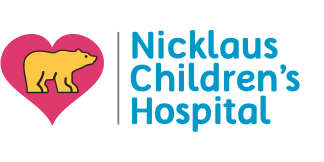- Parents Home
- Para Padres
- Allergy Center
- Asthma Center
- Cancer Center
- Diabetes Center
- Diseases & Conditions
- Doctors & Hospitals
- Emotions & Behavior
- First Aid & Safety
- Flu Center
- Food Allergy Center
- General Health
- Growth & Development
- Heart Health
- Homework Help Center
- Infections
- Newborn Center
- Nutrition & Fitness Center
- Play & Learn Center
- Pregnancy Center
- Q&A
- Recipes
- School & Family Life
- Sports Medicine Center
- Videos
- Kids Home
- Para Niños
- Asthma Center
- Cancer Center
- Diabetes Center
- Feelings
- Getting Help
- Health Problems
- Health Problems of Grown-Ups
- Heart Center
- Homework Center
- How the Body Works
- Illnesses & Injuries
- Kids' Medical Dictionary
- Movies & More
- Nutrition & Fitness Center
- Puberty & Growing Up
- Q&A
- Recipes & Cooking
- Relax & Unwind Center
- Stay Safe Center
- Staying Healthy
- Staying Safe
- Videos
- Teens Home
- Para Adolescentes
- Asthma Center
- Be Your Best Self Center
- Cancer Center
- Diabetes Center
- Diseases & Conditions
- Drugs & Alcohol
- Expert Answers (Q&A)
- Flu Center
- Homework Help Center
- Infections
- Managing Your Medical Care
- Managing Your Weight
- Nutrition & Fitness Center
- Recipes
- Safety & First Aid
- School & Work
- Sports Center
- Stress & Coping Center
- Videos
- Your Body
- Your Mind
First Aid: Febrile Seizures
What Are Febrile Seizures?
Febrile seizures are convulsions that happen in some children with fevers. They affect kids 6 months to 5 years old and are most common in toddlers 12–18 months old. They usually happen on the first day that a child has a fever above 100.4°F (38°C).
Most seizures stop on their own after a few minutes and don't cause any other health problems.
What Are the Signs & Symptoms of Febrile Seizures?
During a febrile seizure, your child may:
- have jerking movements
- convulse, shake, or twitch
- moan
- become unconscious (pass out)
What to Do
If you think your child is having a seizure due to fever, try to stay calm and:
- Gently place your child on the floor or the ground.
- Remove any nearby objects.
- Place your child on his or her side to prevent choking.
- Loosen any clothing around the head and neck.
- Watch for signs of breathing problems, including bluish color in the face.
- Try to keep track of how long the seizure lasts.
When the seizure is over, call your doctor. He or she probably will want to see your child.
Get Emergency Medical Care if Your Child:
- has a febrile seizure that lasts longer than 5 minutes
- the seizure involves only some parts of the body instead of the whole body
- has trouble breathing or turns blue
- isn't responding normally
- has another seizure within 24 hours
Think Prevention!
No one knows why febrile seizures happen, so they usually can't be prevented. If your child is uncomfortable due to the fever, give acetaminophen or ibuprofen as directed by your doctor. It's important to call the doctor so your child can be seen after a febrile seizure.

© 1995- The Nemours Foundation. KidsHealth® is a registered trademark of The Nemours Foundation. All rights reserved.
Images sourced by The Nemours Foundation and Getty Images.

